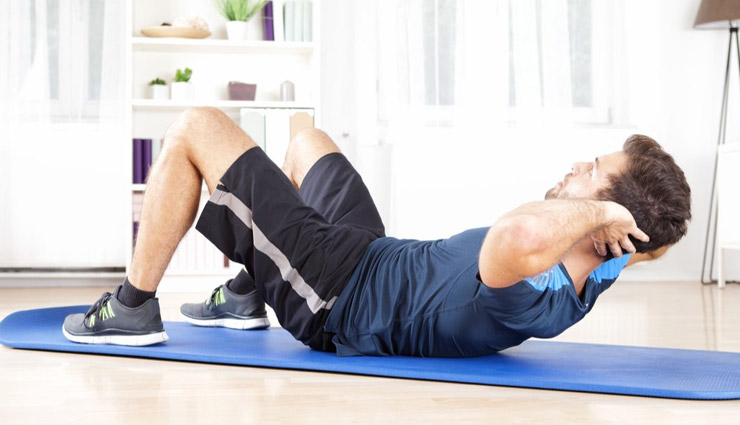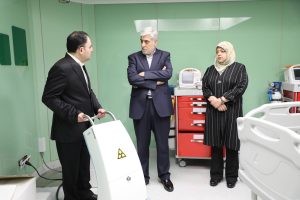
Life’s swift pace demands no pause
Barekat Health & Pharmaceutical Group: In today’s fast-paced world, where the volume of responsibilities and the speed of life are continuously escalating, the imperative to preserve both physical and mental health has become more critical than ever before. Yet, lack of time and access to facilities often deter many from engaging in formal gym sessions or structured exercise programs. Does this mean surrendering to inactivity and neglecting one’s health? Absolutely not.
This report outlines scientifically grounded, intelligent, and practical pathways to remain active without reliance on specialized sports environments—strategies embedded in everyday life that are both feasible and effective in ensuring vitality and enhancing quality of life.
Vitality in Embrace of Daily Movement
At first glance, daily movement may appear trivial, yet it plays a pivotal role in maintaining both bodily and mental health. Effective physical activity does not necessarily require gym attendance or complex equipment. What truly matters is the continuity of movement, however modest, woven consistently throughout the day.
The human metabolism functions optimally not through intense bursts of energy during a single strenuous workout, but rather via the strategic distribution of movement throughout waking hours. Purposeful walking, periodic stretching during work, brief intervals of standing amidst prolonged sitting, and even simple positional changes serve as critical stimuli. These activities enhance cardiovascular function, improve cerebral oxygenation, and support musculoskeletal integrity.
Indeed, a sedentary lifestyle stands as a principal contributor to chronic diseases, and chronic inactivity jeopardizes not only physical health but also mood and cognitive performance.
Redefining Energy & Movement
Contrary to common belief, energy is not solely derived from nutrition or sleep; movement is one of the fundamental sources of energy regeneration within the body. Physical activity triggers the release of hormones such as endorphins and serotonin, fostering feelings of vitality, motivation, and psychological calm.
A body confined to prolonged stillness progressively suffers functional decline: circulation slows, blood glucose levels rise more rapidly, and immune competence diminishes over time. Yet even simple movements—gentle stretching, rising from a chair, or climbing stairs—can stimulate the nervous system, enhance mental alertness, and restore hormonal balance.
Therefore, daily movement is not merely a physiological necessity but a smart strategy to sustain energy and optimize brain and bodily functions.
Intelligent Activity: Efficiency Over Exhaustion
In today’s productivity-driven era, intelligent exercise supersedes exhaustive effort. The concept of physical activity no longer confines itself to lengthy gym sessions. Quality, continuity, and compatibility with one’s lifestyle now take precedence.
For instance, performing three separate 10-minute bouts of simple exercises throughout the day can yield benefits comparable to a continuous 30-minute session. Incorporating squats, wall push-ups, or planks intermittently during work or study prevents muscle stiffness while significantly supporting spinal health and muscular strength.
Intelligent activity means transforming ordinary moments into opportunities for health, without dependence on gym facilities or extended time commitments.
Simplicity: Secret to Sustainable Health
Empirical evidence and scientific experience have demonstrated that the most effective movement programs are those that are simple, practical, and sustainable. Complex training regimens or specialized equipment may motivate initially but often fail to endure in daily life.
Conversely, fundamental movements—such as shoulder stretches, pelvic rotations, repeated sit-to-stand actions, or bodyweight resistance exercises—when performed regularly and consistently, fortify muscular structure and maintain joint health.
Simplicity in execution, flexibility in scheduling, and alignment with lifestyle are the three golden keys to transforming movement into a lasting habit.
Practical & Scientific Tips for Staying Active Without a Gym
-
Smart Walking:
A simple, cost-free activity proven to enhance cardiovascular performance, weight control, mood elevation, and diabetes prevention. A brisk 20 to 30-minute daily walk, even divided into three 10-minute segments, can significantly improve health markers. -
Choosing Stairs Over Elevators:
Seemingly trivial but highly effective for strengthening quadriceps, gluteal muscles, and knees. Regular stair use boosts cardiac capacity, increases lower-body muscle mass, and aids weight management. -
Bodyweight Resistance Exercises:
Squats, lunges, planks, wall push-ups, and knee lifts can increase muscular strength, improve balance, and reduce fat without equipment. These exercises also contribute to bone health. -
Regular and Targeted Stretching:
Movements that expand joint range of motion, prevent muscle stiffness, and improve posture. Regular stretching of the neck, lower back, hamstrings, and back muscles markedly reduces musculoskeletal discomfort. -
Managing Sitting and Standing Intervals:
Prolonged sitting is a silent risk factor for cardiovascular disease and decreased lifespan. Standing or moving every 30 to 45 minutes, or performing light stretches at the workplace, enhances circulation, relieves spinal stress, and boosts cognitive function.
Smart Movement: Key to a Balanced Life
Ultimately, a healthy life hinges on small but consistent choices. Although professional sports environments offer unique benefits, sustainable health begins with recognizing the importance of daily movement and creatively utilizing ordinary moments.
Smart movement not only preserves the body’s optimal condition but also sharpens, focuses, and increases mental flexibility. Sustainable health is the outcome of mindful decisions: opting for stairs over elevators, pausing briefly for stretching during work, or taking a simple walk after meals.
Collectively, these moments assemble the mosaic of tomorrow’s health.
-
Barkat Group specialized meeting

-
Safa Appointed as Barekat General Director

-
Barekat Health & Pharmaceutical Group at the 10th Iran Pharma Exhibition

-
Ali Safa visits Sobhan Oncology & Sobhan Darou

-
Pirsalehi & Safa visit Saman Daroo 8 Knowledge-based Company

-
Barekat Managing Director Visits Samen Pharmaceutical Company

-
Honoring Pharmacists’ Day

-
Barekat Top Executives Visiting to Barekat Hospital

